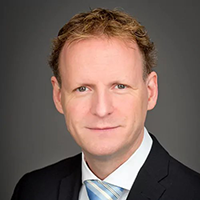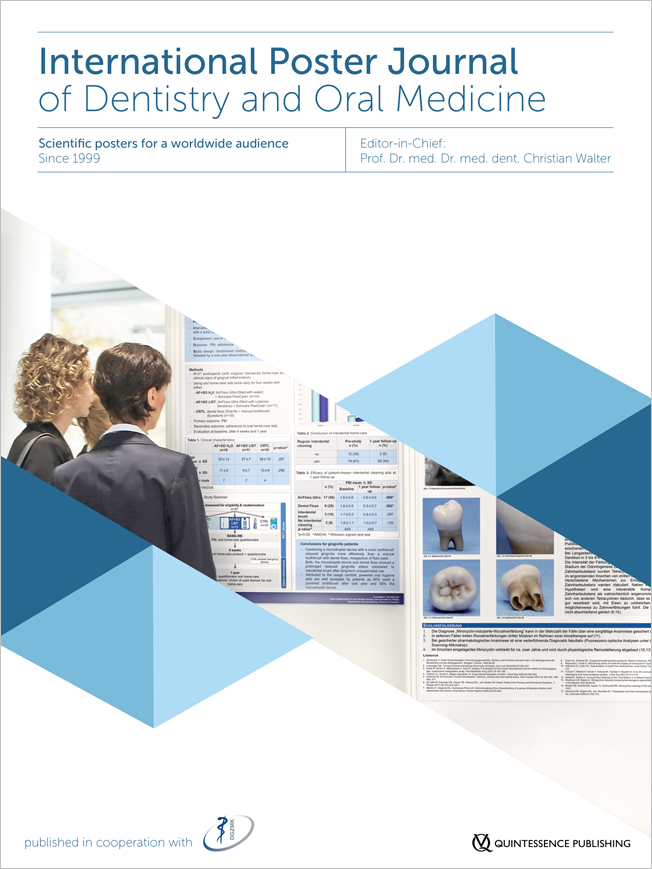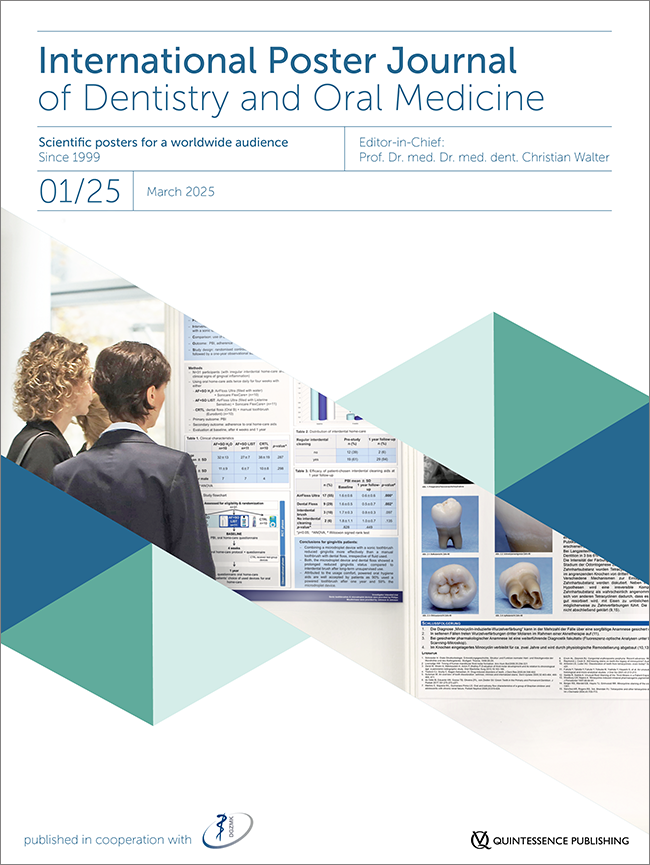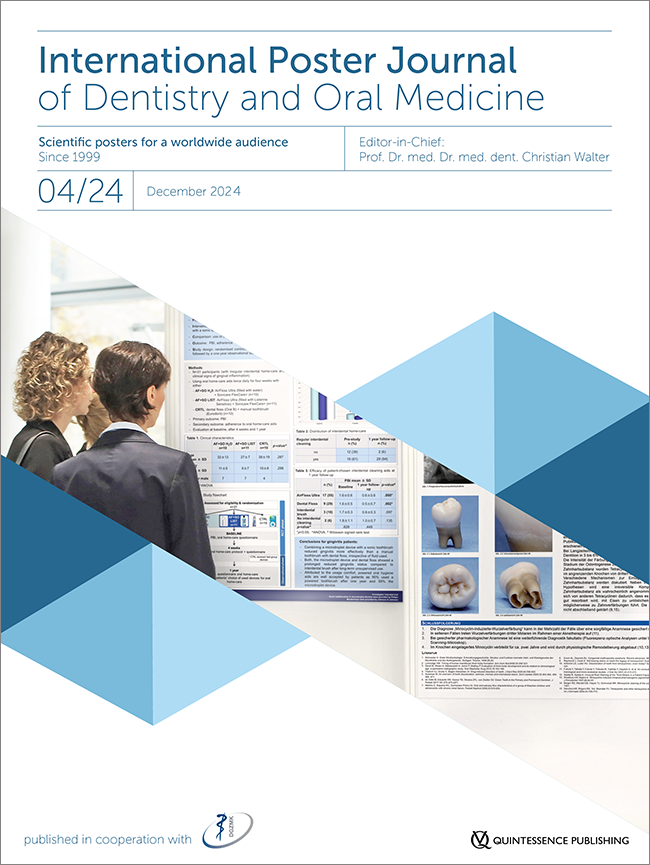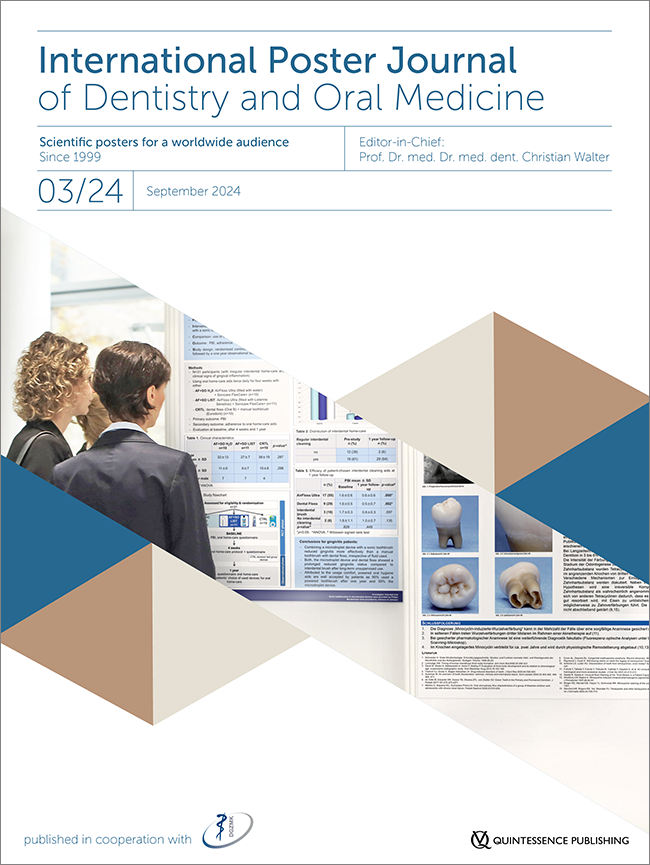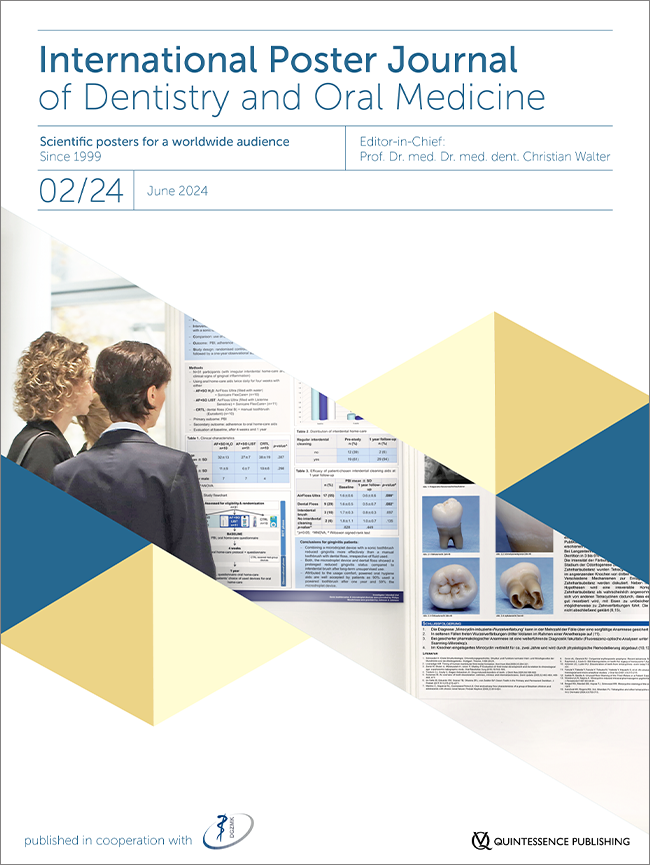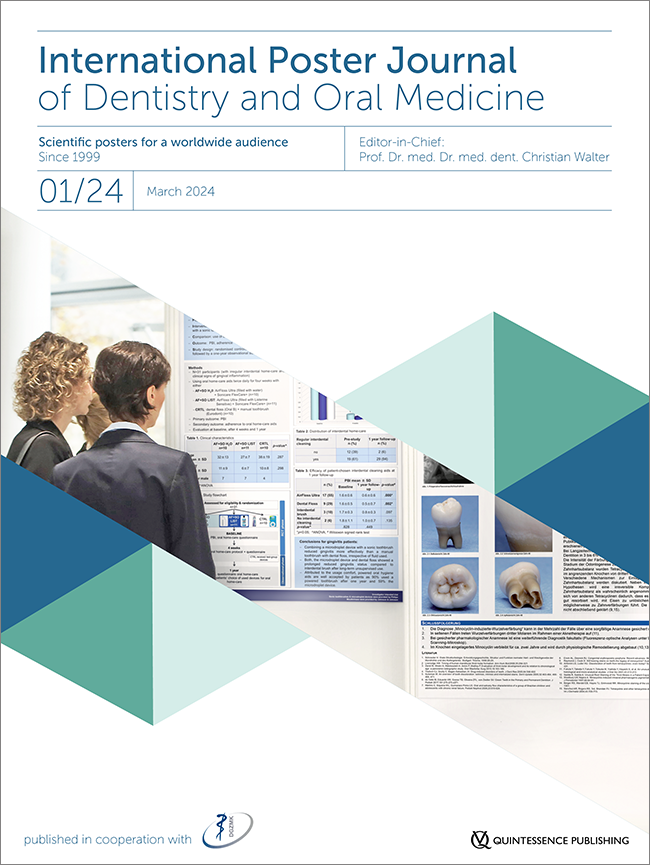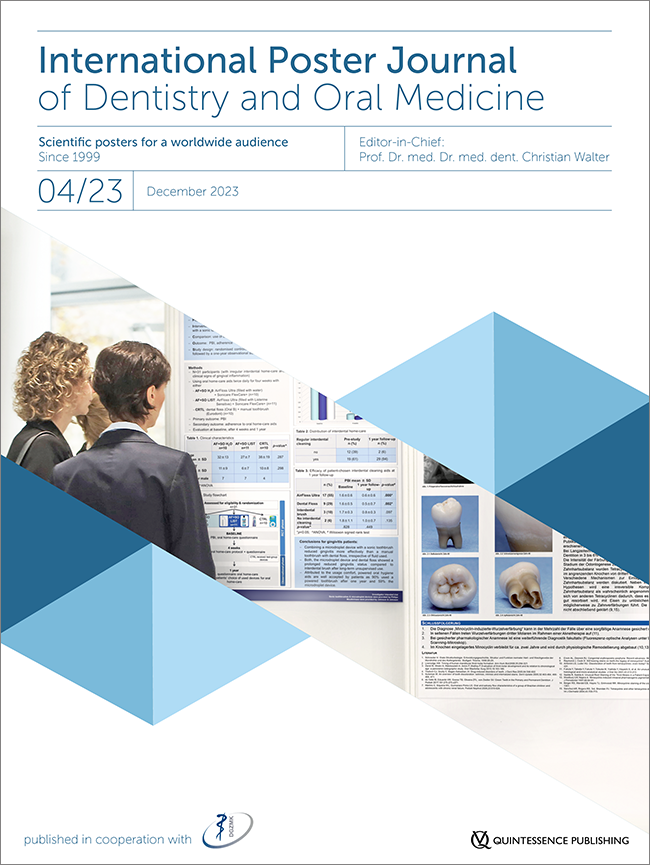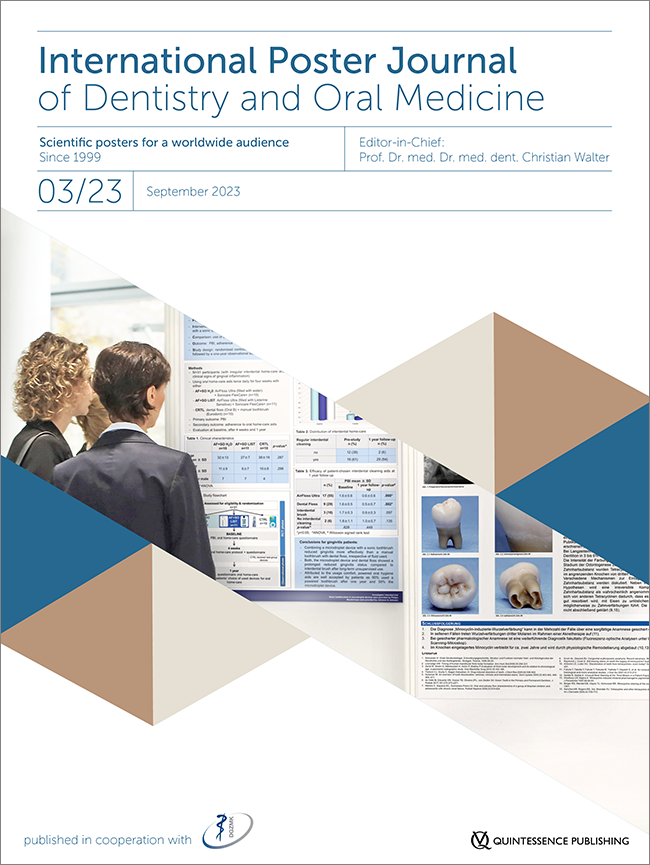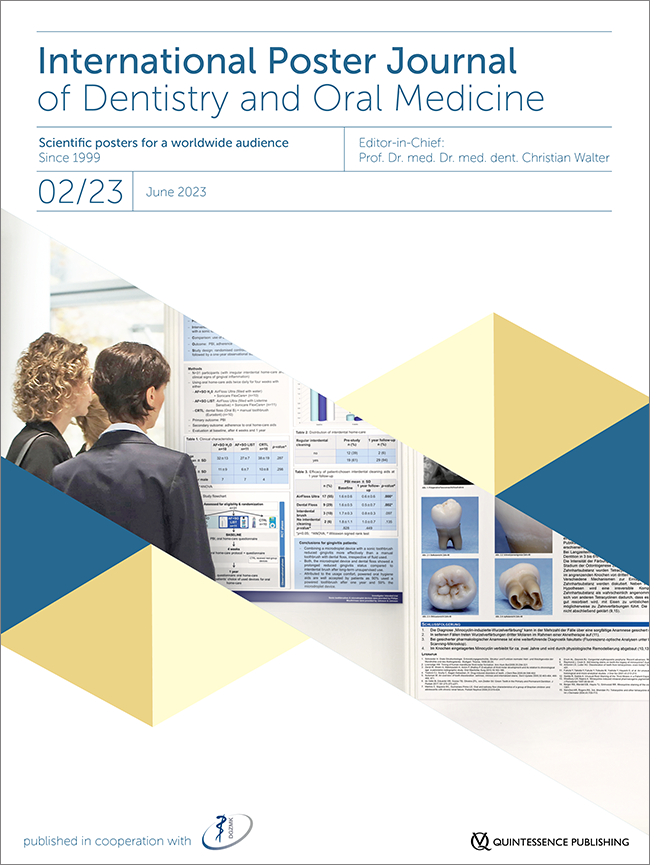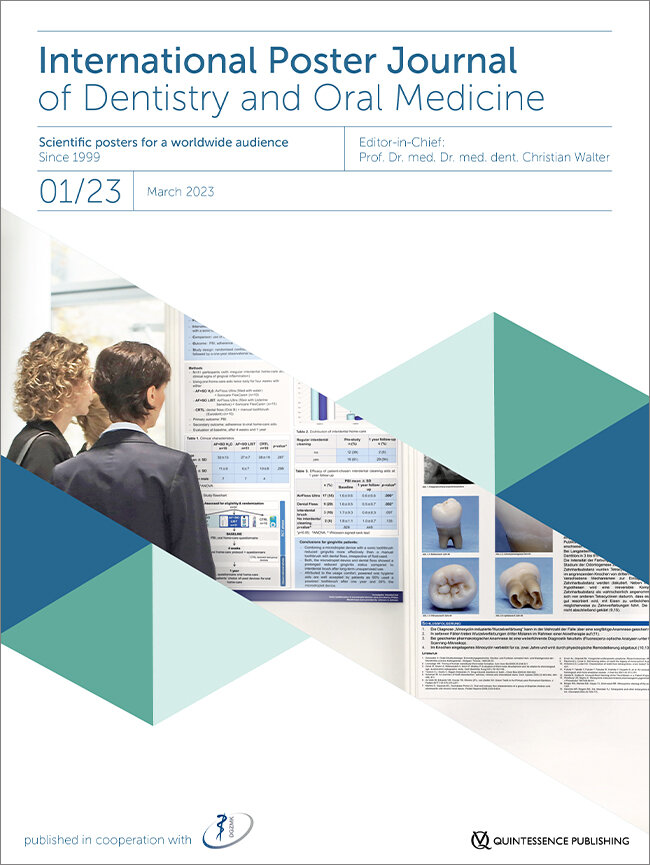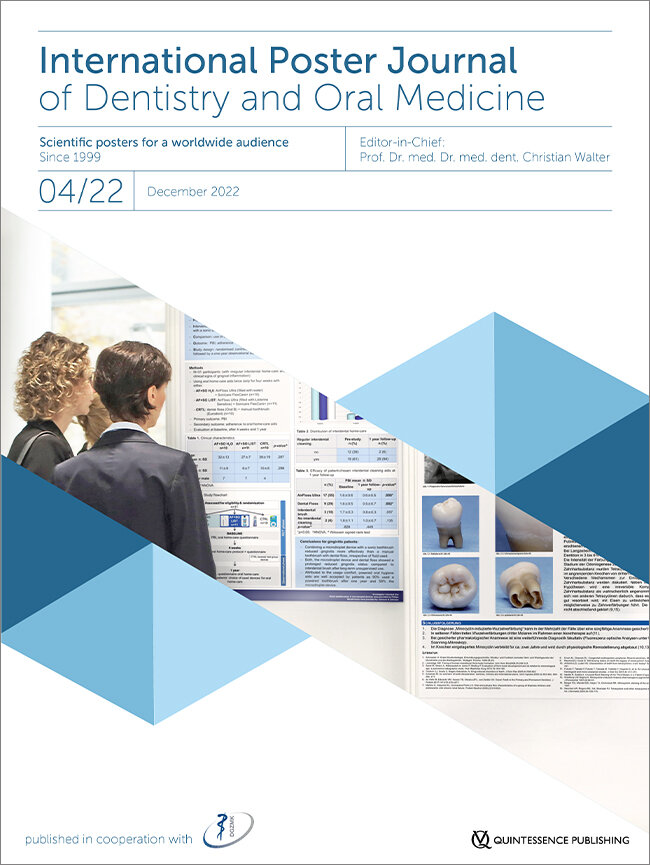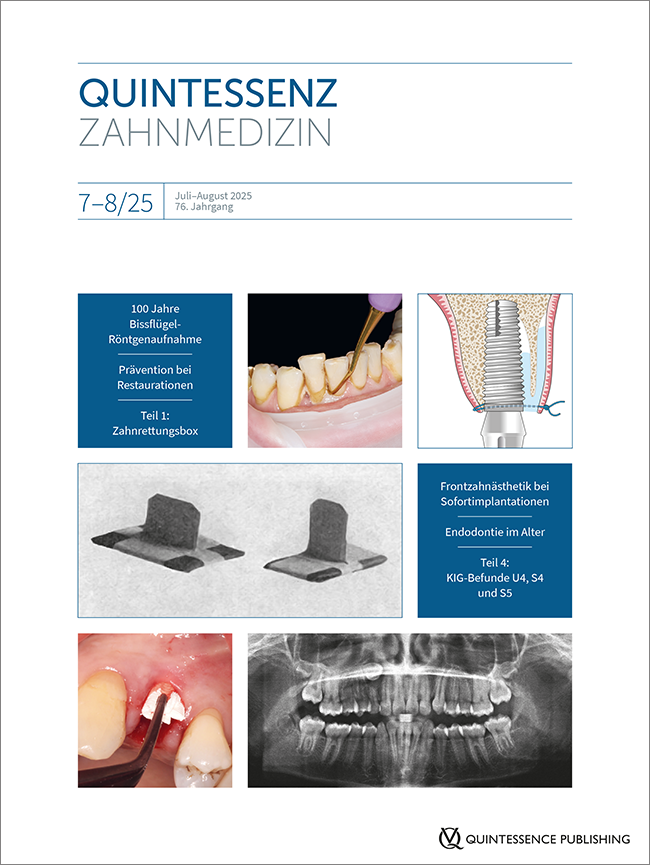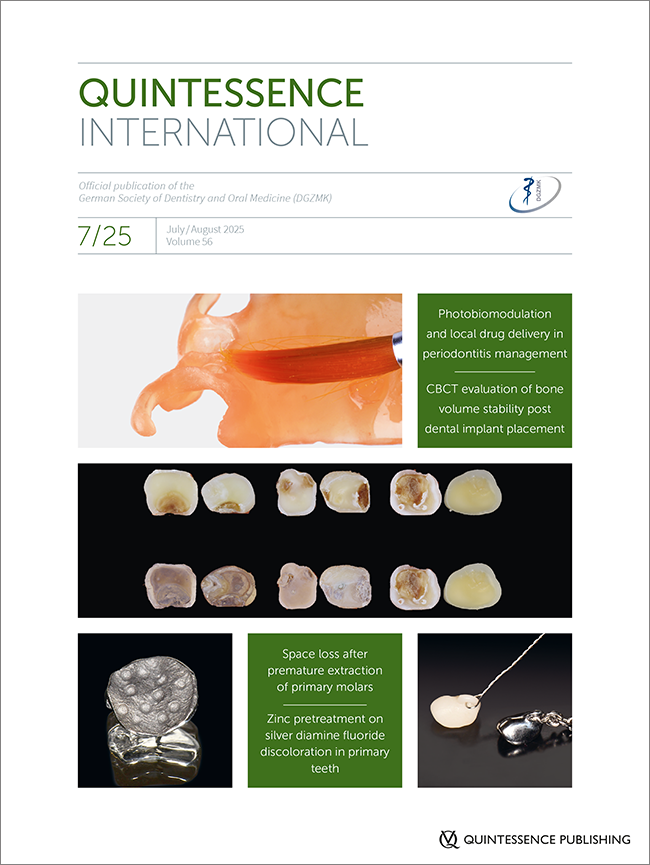Poster 2689, Language: English, GermanKetteler, Judith / Poggenpohl, Laura / van der Bijl, Nils / Daume, LindaThe clinical diagnosis of gingival hyperplasia can have multiple causes, in which acquired and hereditary causes must be distinguished. Only pathohistologically can the true cell proliferation be distinguished from the increase in cell volume. With less than 100 known cases worldwide, Temple-Baraitser syndrome is a very rare hereditary, autosomal dominant genetic disorder. It is characterized by mental retardation, hypotonia in early childhood, epilepsy, small or non-existent thumb and toe nails, and certain facial features. Temple-Baraitser syndrome is caused by mutations in the KCNH1 genome at chromosomal locus 1q32.2. A ten-year-old female patient presented accompanied by her parents. Human genetics had shown that she had Temple-Baraitser syndrome. In all previously known cases of the syndrome, epileptic seizures and autistic behaviour were reported, as in this patient. The girl therefore also took Ospolot (anticonvulsant) daily. The patient showed the typical phenotype, with a low hairline, flat forehead, downward sloping palpebral fissures, broad, depressed nasal bridge with anteriorly directed nostrils, short columella, long philtrum, and high palate. The gingival hyperplasia typical of late childhood was also clearly evident in this patient. The patient had deciduous dentition with poor hygiene due to limited compliance and pronounced gingival hyperplasia. The permanent dentition was - as far as radiologically assessable - in place. The gingival hyperplasia in this patient is most likely syndrome- and anticonvulsant-associated. The treatment of gingival hyperplasia depends on the cause and usually consists of achieving the best possible hygiene of the dentition and, in individual cases, the removal of excess tissue. The family is therefore advised to improve oral hygiene. Further tooth eruption is awaited and orthodontic support is provided if necessary. Complete discontinuation of the medication is often not possible, as was the case with the anticonvulsants in this case.
Keywords: Temple-Baraitser syndrome, gingival hyperplasia, anticonvulsants
Poster 2690, Language: English, GermanJaber, Mona / Daume, Linda / Hanisch, Marcel / Jung, Susanne / Jaber, MohammedThe aim of this study was to determine the extent to which pain reduction can be achieved by applying a new conservative treatment approach (from a neurological and dental perspective) for jaw and facial pain. 42 pain patients presented at the maxillofacial outpatient clinic after an unsuccessful search for a dental focus. The criteria were jaw and facial pain. Of these, 25 patients had previously undergone inpatient neurological assessment due to pain exacerbation. The patients were also categorized according to whether they were receiving neuroleptics. All patients were treated in the MKG according to the same protocol. All patients received a total of 2 questionnaires. One before therapy and the second after 6 weeks of wearing the splint. At the 1st session, the patient undergoes an osteopathic screening; the 1st session also includes a detailed anamnesis. During the 2nd session, osteopathic treatment is carried out while the bite is contactless using cotton rolls. The two main influences on the position of the temporomandibular joint are manipulated: the occlusion by means of cotton rolls and the osteopathic treatment of the masticatory muscles in particular. The bite is then taken directly without any manipulation. In the 3rd session, the osteopathic treatment is carried out first and then the splint is inserted. The patients had to wear the splint permanently for 6 weeks (except for food intake) for neuromuscular adaptation. The patients received physiotherapy during this phase. 6 weeks after wearing the splint, the patients were called in for the 1st splint check after osteopathic treatment. The 2nd questionnaire was now completed by the patients. The results: Eleven patients wore the splint at night and hourly during the day. The patients described relaxed masticatory muscles in the morning. The intensity of pain and the initial symptoms were reduced, but were still present. Of the 31 patients who adhered to the intensive wearing mode of the splint, 22 patients were free of symptoms and complaints. In the remaining 9 patients, the symptoms and complaints were still present, but were described as significantly reduced. Conclusion: Based on the 42 patients treated, it can be concluded that the therapeutic approach is promising for the treatment of jaw and facial pain.
Keywords: Jaw and facial pain, neurology, osteopathy, dental splint
Poster 2691, Language: English, GermanJaber, Mona / Kanemeier, Moritz / Stamm, Thomas / Schmid, Jonas Q. / Kleinheinz, JohannesThe aim of the present study was to introduce and validate an open workflow for the cephalometric evaluation of 2D cephalometric lateral radiographs (FRS) generated from digital volume tomography (CBCT). This study was performed on four patients with FRS and CBCT with sufficiently large FOV available at the same time. Using a Phyton script written for this project, 2D FRS images were reconstructed from the CBCTs. Each image was cephalometrically analysed by 6 raters. The agreement of the cephalometric values from both methods was checked using Bland-Altman analysis. Using an open workflow, it was possible in all cases to generate a 2D reconstruction that was sufficient for cephalometric evaluation. The cephalometric analyses performed with this workflow led to clinically comparable results. The presented open workflow could be validated on the present patient collective.
Keywords: open workflow, cephalometric analyses, reconstruction of cephalometric lateral radiography from CBCT, Bland-Altman analyses
Poster 2693, Language: English, GermanDaume, Linda / Jaber, Mona / Oelerich, Ole / Kleinheinz, JohannesOsteogenesis imperfecta (OI) is a rare genetic disorder characterized by a defect in type I collagen that leads to bone fragility and connective tissue disintegration. The orofacial manifestations of OI include dentinogenesis imperfecta (DI), tooth and jaw malocclusion, and dental anomalies.This case report shows a four-year-old female patient with OI who presented with brown discolouration typical of DI on all deciduous teeth on oral examination. The teeth were already severely abraded and the bite height was reduced. The patient was symptom-free and practiced optimised oral hygiene. Patients with these genetic structural anomalies require lifelong, close, interdisciplinary dental care to maintain the results of treatment.
Keywords: osteogenesis imperfecta, dentinogenesis imperfecta, rare genetic disorders
Poster 2694, Language: English, GermanDaume, Linda / Kleinheinz, JohannesA patient with ectodermal dysplasia (ED) presented with a total of 20 congenital missing teeth, including wisdom teeth. An ED was confirmed by molecular genetic testing. An implant-supported denture for fixed, masticatory rehabilitation was applied for and approved by the health insurance company as an exceptional indication. The treatment was carried out after completion of orthodontic treatment at the age of 17. This means that patients with multiple missing teeth can receive an implant-prosthetic restoration before growth is complete. Patients demonstrably gain in quality of life.
Keywords: ectodermal dysplasia, implants, multiple agenesis
Poster 2695, Language: English, GermanDaume, Linda / Poggenpohl, Laura / Joanning, Theresa / Kleinheinz, JohannesLichen planus is a common chronic inflammatory disease that affects the skin and mucous membranes (especially the oral and genital mucosa) and whose aetiology is unknown. Initially, topical salves, gels or mouthwashes containing corticosteroids are used for treatment. For localized, chronic ulcerative oral lichen planus lesions (OLP), an intralesional application of corticosteroids can be used, which can sometimes be repeated two to three times at intervals of just under a month. This case report shows that intralesional injection of triamcinolone is an effective treatment for refractory cases of OLP. Long-term and regular monitoring is required.
Keywords: oral lichen planus, ulcerativ lesions
Poster 2697, Language: EnglishVerma, Surbhi / Narwal, Anjali / Devi, Anju / Kamboj, MalaIntroduction: Proper fixation and preservation of tissue are important in rendering an accurate histopathological diagnosis. Fixation with 4% formaldehyde or 10% neutral-buffered formalin has been practiced since many years. Despite its advantages, the safety risks associated with formalin remain a significant concern for its routine use in laboratories. Also, availability of formalin for tissue preservation is frequently lacking during medical camps, necessitating accessible alternatives. Various studies have explored the use of local anaesthetic solution (LA) as a tissue fixative. While LA has shown promising results, the outcomes have varied amongst the majority of studies. Moreover, clove oil which is readily available in dental clinics has gained significant attention for its attributes, including anti-inflammatory, analgesic, anaesthetic, phenolic content, dehydration ability and antimicrobial properties, suggesting its potential use as a fixative. Hence, this study was undertaken with an innovative fixation approach, aiming to explore fixative property of clove oil and compare it with LA and 10% neutral-buffered formalin. Objective: To compare the efficacy of clove oil with LA and 10% neutral buffered formalin as tissue fixative. Methodology: In this study, fresh chicken samples were fixed using three different solutions: clove oil, LA, and 10% neutral-buffered formalin. After 24 hours of fixation in each solution, a total of 21 tissue samples were analysed, with seven samples fixed in each of the three fixatives. These tissues underwent routine processing and were stained using haematoxylin, and eosin (H&E). Two blinded oral pathologists then conducted a qualitative assessment of the samples under a compound microscope to evaluate the efficacy of each fixative. The criteria used for histopathological assessment were (a) staining quality (b) cellular quality (c) absence of tissue fragments (d) stroma morphology. Results: In our study, LA demonstrated superior cellular and staining quality. Moreover, tissues fixed in clove oil exhibited fewer instances of tearing and fragmentation compared to other fixatives. The morphology of the stroma was found to be comparable across all three groups. Conclusion: Given the current necessity for readily accessible tissue fixatives, our initial research indicates that clove oil (eugenol), commonly used in dental practice, shows potential as a promising fixative. However, further studies on human tissues are needed to confirm these findings.
Keywords: fixation, 10% neutral buffered formalin, emergency fixatives, local anaesthetic solution, clove oil
Poster 2698, Language: English, GermanOelerich, Ole / Menne, Max C. / Daume, Linda / Runte, Christoph / Becker, AlexanderObjective: Peri-implant bone loss is a significant parameter that determines the survival rate of implant-supported prosthetic restorations. The aim of this study is to compare the peri-implant bone level between the parallel technique commonly used in everyday practice and a modified right-angle technique. In particular, studies with long follow-up periods may be subject to projection-related deviations in the determination of radiological peri-implant bone loss. The following study investigates whether these projection-related deviations can be minimised by using a modified right-angle technique. Material and method: Three mandibular segments with a deviant bone course were printed from radio-opaque PLA (Nanovia PLA XRS, Nanovia) using a 3D printer (Ender 3v2, Creality), as was a modifiable bite block. A Straumann RC BL 4.1 x 12mm implant (Straumann) was then inserted into each model at the same location. A total of 15 radiographs were taken for each model and radiographic technique (parallel vs. right-angle) by two clinicians. Another clinician measured the maximum radiographic bone loss to the implant shoulder mesially and distally in each of the 90 radiographs. The measurements of the individual models were examined for variance homogeneity using a Levene test to determine how strongly the scatter of the results depends on the X-ray technique. Results: The Levene test showed that there was no variance homogeneity for the mesial measurements on model 2 and for the distal measurements on model 1, model 2, and model 3. The standard deviation was lower for the modified right-angle technique in each case. The measurements varied between the models (and measuring points) between 0.2 mm and 0.6 mm for the modified right-angle technique and between 0.3 mm and 0.7 mm for the parallel technique. Summary: In summary, it can be said that the modified right-angle technique can help to minimise the projection-related deviations between consecutive X-ray images.
Keywords: x-ray, projection-related deviation, peri-implant, bone loss
Poster 2699, Language: English, GermanOelerich, Ole / Menne, Max C. / Runte, Christoph / Becker, AlexanderAim: Commercially available 3D printers now enable cost-effective, time-efficient and highly precise production of models that can be used in a university environment for both teaching and research purposes. This opens up a wide range of possible applications. The following sections present some of the areas in which we are already working with 3D printed models. Material and method: The models were created using four different 3D printers.1. Anycubic Photon Mono M5 (Hong Kong Anycubic Technology Co., Limited)2. Formlabs Form 3 (Formlabs Inc.)3. Bambu Lab P1S (Bambulab GmbH)4. Stratasys Eden260VS (Stratasys Ltd.).
Results: A large proportion of the models used for preclinical student courses can now be printed. This means that the examination models for waxing work, functional trays for functional impressions on the phantom, and measuring models for wire clamp exercises can all be printed. The production of practice models and trays is a time- and cost-saving method of improving preclinical teaching. For the implant-prosthetic course modules, model inserts can be printed that simulate cancellous and compact bone. Furthermore, it is possible to print radiopaque models that can be used for X-rays. This enables realistic implant and endodontic exercises to be carried out for both research and teaching purposes, and then verified radiologically without exposing patients to radiation. Summary: The use of 3D-printed models offers many possibilities for implementation in research and teaching. They offer some advantages over traditional plaster models. The necessary software and 3D printers can now be used without much prior knowledge and are relatively inexpensive to purchase.
Keywords: 3d printing, dental models, research and teaching
Poster 2704, Language: English, GermanQorri, Rezart / Cunoti, Nertsa / Köbel, Chris / Löffler, Udo / Gerressen, MarcusThe term "Primary Failure of Tooth Eruption" (PFE) refers to the presence of one or more primary non-ankylosed teeth which, due to a disruption in the eruption mechanism, do not or only partially erupt on their own. After the resorption of the coronal alveolar bone, these teeth do not fully erupt despite the absence of a mechanical obstruction. PFE with pathogenic mutations in the PTHR1 gene, located on chromosome 3 (3p22-21.1), is characterised by a defect in the periodontium. Vertical growth ceases at a certain point, causing the teeth to exhibit progressive infraposition and eventually re-submerge beneath the mucosa. Orthodontic movement of such teeth is not possible as they behave like osseointegrated implants and cause infraposition in unaffected teeth as well. Variants of eruption disorders with a similar phenotype, but without evidence of a pathogenic PTHR1 mutation, also exist.
Keywords: PFE, primary failure of tooth eruption
